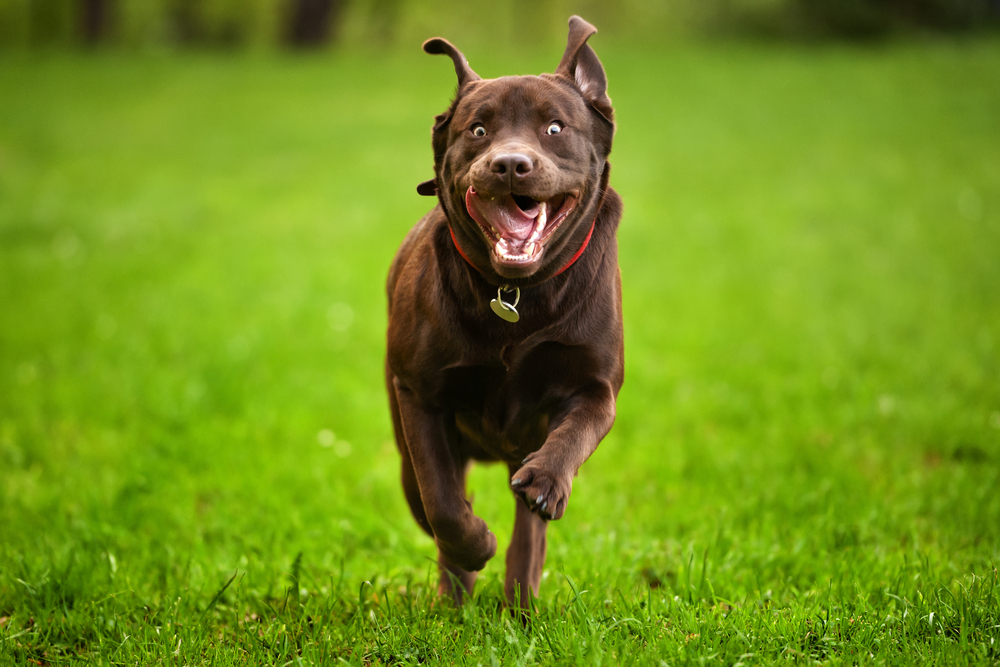Why Do Dogs Suddenly Get the Zoomies?
Posted on Categories Discover Magazine

At times, it may seem like your dog is possessed, running to and fro, or round in quick, frenzied circles. This sudden burst of energy is actually common behavior, widely known as the zoomies, and is scientifically known as Frenetic Random Activity Periods (FRAPs).
“It’s like a sudden outburst which looks like excitement where your dog runs really fast,” says Lili Chin, author of Doggie Language: A dog lover’s guide to understanding your best friend. “They might jump up and down and bark. It’s like a frenetic activity that happens very suddenly and involves a lot of speed.”
Dogs young and old can undertake these frantic running periods, but it is most common in puppies. It isn’t entirely clear why FRAPs occur, but some suggest they stem from overexcitement, boredom or simple happiness.
“At first I thought are they playing? Are they really happy? But that is a bit of a myth there,” Chin says. “With zoomies, that type of body language, it usually means that they are releasing pressure of some kind.”
What Are the Zoomies?
A release of pressure may happen from too much excitement or an increase in stimulation, but FRAPs episodes generally represent a good mood, according to a group of researchers from the University of Adelaide. Yet, there is a distinct lack of scientific evidence as to why they occur, they note, so the exact reasons remain open.
More often than not, FRAPs episodes won’t last very long. They typically last a few minutes and anything beyond 10 minutes is usually rare. One dog zooming can also trigger others to join in.
Why Do Dogs Get the Zoomies?
Though they may appear random, FRAPs can be triggered by certain events or may happen more often at certain times of the day. It all depends on the dog and its situation. Though times can change, common instances amongst dogs are before bedtime, being released from a crate, after a bath, post dinner or when an owner returns from work, Chin explains. Undergoing training can also trigger FRAPs, along with a simple act like defecation.
These periods aren’t dependent on the breed of dog and some pooches may get the zoomies only in their puppy years, while others may keep on zooming as they age. Some dogs may never zoom at all.
“What triggers the zoomies sort of varies from dog to dog,” Chin says. “It usually follows a period of boredom, being restrained, a challenging experience, or over excitement.”
Read More: Why Do Dogs Tilt Their Heads to One Side?
Are Dog Zoomies Harmful?
While there is generally nothing wrong with dogs getting the zoomies, it’s a good idea to keep an eye on the behavior nonetheless, according to the American Kennel Club. If in doubt, experts state that owners should contact their vet as having intense FRAPs could be a symptom of stress or a medical condition.
According to Petplan, some FRAPs episodes can also include seemingly aggressive behavior such as nipping or biting; in these instances, the recommendation is to grab a toy to channel the dog’s overexcitement elsewhere.
“If your dog exhibits zoomies frequently or at inopportune times (such as when you are asleep), they may be telling you that they need more exercise and mental stimulation,” wrote Pamela Perry, at the Cornell College of Veterinary Medicine. In this case, the zoomies could be interpreted as a call for more playtime, a walk or more attention.
From a practical point of view, experts note that clearing a path for your racing dog is important for its own safety.
“It’s also worth paying attention to what happens before your dog gets the zoomies,” Chin says. “Because that will give you some information about how your dog felt about what they just went through.”
Read More: Dogs Have Co-Evolved With Humans Like No Other Species
Do Other Pets Get the Zoomies?
By no means are dogs the only family pets that behave this way either. Cats are known zoomers. Guinea pigs and ferrets engage in their own FRAPs, but the behavior is known commonly as “bunny binkies” in pet rabbits.
In these cases, the furry critters can run around erratically but also jump from place to place at warp speed. Experts have also observed similar kinds of overexcited behavior in wild species, such as elephants, too.
Read More: Why Do Dogs Tilt Their Heads to One Side?